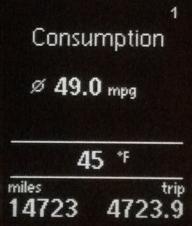
I have written a couple posts about my VW Golf TDI, noting its fuel efficiency, practicality and the relatively engaging driving experience. While I have no regrets deciding on the diesel-burning hatchback, I’ve been longing for a hybrid—or rather, the fuel efficiency of one—now that my commute is almost entirely within the city.
That is not to say the Golf’s fuel economy has been disappointing. Just the opposite; since moving to Alexandria, Virginia, a somewhat hilly suburb of D.C., the tank average has hovered around a very respectable 36mpg (30mpg is EPA’s city rating). Probably 90 percent of my driving is in the city, with the vast majority of trips being less than ten miles. On the highway, it doesn’t take much to creep past the EPA’s 42mpg rating. In fact, the car displayed 49mpg after a light-footed, 25-mile round trip to Maryland last weekend. I also averaged 47mpg on a 1,115-mile trip from Florida to Virginia last year. Compact oil burners like the Golf do well in the city but spectacular on the highway.
But why not have it both ways? Most people would not complain about 36mpg in the city, until they compare it against a class-leading hybrid. I really like the Golf TDI, but for a vehicle whose greatest attribute and primary reason for existing is its superior fuel efficiency, it’s hard not to be irked that several hybrids offer significantly better fuel economy at similar, if not cheaper prices.
Looking at Toyota’s expanding Prius lineup (excluding the plug-in version), the EPA-rated city fuel economy is 51mpg for the original Prius; 53mpg for the Prius c; and 44mpg for the Prius v. Those are improvements of 42 percent, 47 percent, and 22 percent, respectively. Furthermore, in the U.S. diesel fuel is more expensive than gasoline, and emits more carbon due to its greater energy density (which is why diesel engines are more “efficient”). It’s no wonder that Toyota sold its 5 millionth hybrid in March.
While hybrid technology adds a significant cost to a vehicle’s price tag, this experience goes to show that the economic argument for electric drivetrains has solidified. Even with the unbeatable city fuel economy, there remains a convincing sentiment that non-hybrids are better driver’s cars. But, with CAFE standards set at 37.8mpg by 2016, automakers won’t have a choice—in the near future, hybrids will have to compete with traditional vehicles by every standard.




